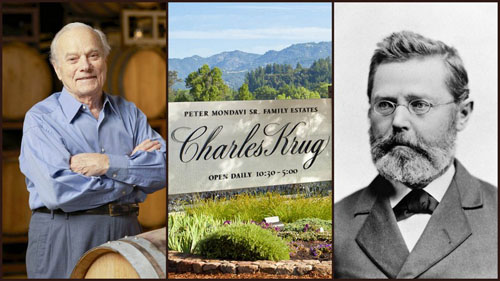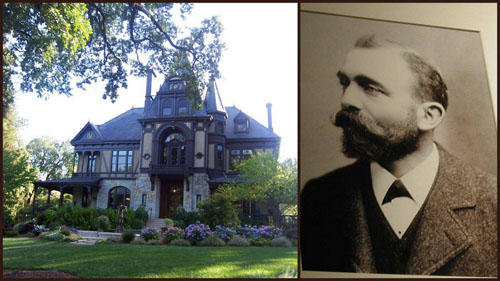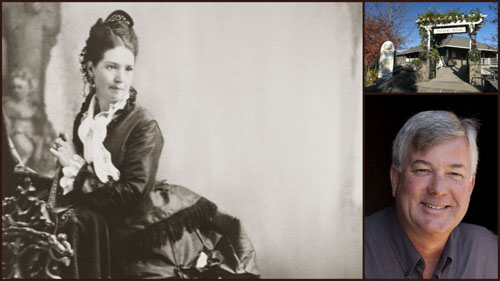Persistence. Dedication. Hope. Just a few of the characteristics needed to create and sustain historic wineries in Napa Valley. Napa Wine Tours has selected a few Napa Valley historic wineries to share. Each with their own unique stories.
Becoming a historic winery in Napa Valley was not easy. In the 1890’s vines were destroyed by the almost microscopic insect related to aphids, phylloxera. In 1920, Prohibition banned the production, sale, and transportation of liquids containing alcohol. Then, in 1929, the stock market crashed and the Great Depression began. In the late 1980’s through the 1990’s, phylloxera hit Napa Valley again with devastating effects. These are just a few of the obstacles these historic wineries have confronted and defeated.

Charles Krug Winery
Charles Krug immigrated from Prussia to the United States. In 1861 he established the first commercial winery. His determination, hard work, and creative thinking inspired others and by 1889, more than 140 wineries were founded. After his death in 1892 the winery became the property of James Moffitt until 1943 when Moffitt sold Charles Krug Winery to Cesare Mondavi. Today, Charles Krug Winery continues to thrive under Peter Mondavi and his family.

Beringer Vineyards
Jacob Beringer left his home in Germany and arrived in New York in 1868. The lure of California and Napa Valley captured more than his attention and in 1875 he and his brother purchased the land where they would plant their first vineyard. Beringer Vineyards was founded in 1876. Since 2001 Beringer has been designated as a historic district and is in the National Register for Historic Places. Today Beringer offers a variety of tours of their extensive, historic grounds along with tastings of their impeccable wines.

Freemark Abbey
The first woman on record to own a winery in Napa was Josephine Tychson. In 1886, Freemark Abbey’s first name was Tychson Cellars. In 1894, Josephine Tychson sold the winery to her foreman who in turn sold it in 1898 to Antonio Forni. Tychson Cellars became Lombarda Cellars. Once Prohibition began, Lombarda Cellars was forced to close for 20 years. Then, in 1939, three business partners purchased the winery and combined their names to create the name, “Freemark Abbey.” In 1968, seven partners purchased the winery and hired talented winemakers who would become well-known for their outstanding talents. Today the Freemark Abbey winemaking team, led by Director of Winemaking Ted Edwards since 1985, continues to create perfectly balanced, unforgettable wines.

Beaulieu Vineyard
The secret to the remarkable success of Beaulieu Vineyard was its founder, Georges de Latour. After purchasing the first 4 acres that would found Beaulieu Vineyard in 1900, Georges de Latour imported rootstock from Europe that was resistant to the devastating phylloxera. He also began selling wine to the Catholic church to be used during religious ceremonies. The combination of these two key acts allowed Beaulieu to continue to operate and thrive even during Prohibition. After Prohibition was repealed, George de Latour traveled to France where he found the perfect winemaker who would become a mentor to other highly regarded winemakers, some of which would go on to establish their own wineries. Today, Beaulieu Vineyard continues to create highly acclaimed wines.

Inglenook
In 1879 Gustave Neibaum founded Inglenook. Within 10 years the name “Inglenook” was synonymous with critically acclaimed wines nationally and internationally. After his death in 1908, his wife, Susan, continued to run the winery and Inglenook made it through Prohibition by selling grapes to Beaulieu Vineyards. A few years after Prohibition was repealed, in 1933, Susan passed away leaving Inglenook to her grand-niece and grand-nephew. By the 1940’s, Susan’s grand-nephew, John Daniel Jr., had restored the Inglenook name as a producer of some of the best wines being made in Napa Valley. In 1964, John Daniel was forced to make a painful decision due to finances and kept the mansion but sold the winery. Within 5 years the Inglenook name became associated with inexpensive jug wine and its reputation was damaged. Then, in 1975, Francis Ford Coppola purchased the mansion and the surrounding vineyard. Since then he has worked to purchase the original vineyards and bring winemaking back to the Inglenook chateau. With the purchase of the Inglenook name in April 2011 he is determined to restore Inglenook’s reputation as a producer of some of the best Napa Valley wines.


Comments